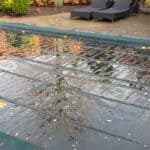If you own a pool, you’re probably aware of all of the regulations surrounding it — everything from where you can dig to place it, to surrounding it with a locking fence.
Unless you’re looking to install a new pool or replace parts of your current one, there’s a change that you might not be aware of.
The Department of Energy (DoE) has put forth new regulations for pool pumps. So, what does this mean, and how will it impact you?
2021 Regulations for Pool Pumps
The new changes are pretty simple: The DoE will require variable speed pumps on all new or replacement in-ground pool filters as of summer, 2021.
These regulations go into effect on July 19, 2021. After that point, any new build or replacement pump must use a variable speed model.
What is a variable speed pool pump?
Variable-speed pool pumps are pretty much what their name implies. They perform the exact same functions as a regular pool pump, but with multiple speed settings.
They pull in water just like a regular fixed-speed pump but come with the added advantage of allowing the operator to control how much electricity the pump uses. More electricity means more pumping power, which means more speed.
These pumps aren’t new. They’ve been around for about 20 years now. After they hit the market, they became very popular.
Most people don’t need their pool pump running full-tilt all of the time — using one at max speed can actually cause the pump to wear out more quickly, the more strain it places on the filter, and the sooner filter media need to be replaced.
Variable speed filters help solve this issue by letting pool owners turn the pump’s power up and down as needed.
Why are variable speed pool pumps required after June 19, 2021?
The DoE is responsible for setting energy efficiency standards.
After working closely with energy efficiency experts and utility companies to establish a reasonable standard of efficiency, they put these new regulations in place to ensure that new pool equipment doesn’t waste energy.
The new regulations are called the “Energy Conservation Standards for Dedicated-Purpose Pool Pumps.”
They say that self-priming pumps for residential or commercial use must meet a specific performance standard. Specifically, pumps rated between .711 and 2.5 hydraulic horsepower must meet this new performance standard.
Right now, only variable-speed pumps are able to meet this standard. Pumps with less than .711 hydraulic horsepower can be single-speed.
What does “hydraulic horsepower” mean?
It’s important to note that hydraulic horsepower is different from regular horsepower.
If you’re used to seeing pumps discussed in terms of horsepower, it might throw you for a loop. Regular horsepower is a measurement of the rate at which a pump works. Hydraulic horsepower relates specifically to its pumping output.
Hydraulic horsepower is calculated as pressure times flow rate. A single-speed pump operating at .710 hydraulic horsepower or lower is acceptable. Any pump operating at .711 or higher needs to be variable speed. .711 hydraulic horsepower roughly equates to 1.15 total horsepower.
Do I need to buy a new variable-speed pool pump?
These new regulations only apply to new pools or new pumps. You only need to buy a variable-speed pump if you meet one of two conditions:
- You’re building a new pool that requires a pump with .711 or greater hydraulic horsepower.
- You are replacing a worn-out pump with .711 or greater hydraulic horsepower.
If your current pool pump is working fine, you don’t need to worry until it wears out and needs to be replaced. There are a few other loopholes. The following types of pumps are exempt:
- Filter pumps with an output greater than 2.5 hydraulic horsepower.
- Pumps used for pressure pool cleaners.
- Pumps manufactured and sold as “waterfall pumps.”.
- Certain pump and filter units are used on portable or aboveground pools.
How can I make sure I stay compliant?
Complying with the new regulations is fairly simple. If you are installing a new pool or replacing your existing pump, use a variable-speed one.
They install just like regular pumps and offer numerous advantages when it comes to electricity consumption and filter wear and tear.
What happens if I’m not compliant?
Penalties for failure to comply with this specific standard have not been made explicit, but the DoE has a system for assessing and applying fines.
While the average homeowner is unlikely to face steep penalties for noncompliance, complying is definitely the way to go.
Variable-speed pool pumps help save money on energy bills, extend the longevity of filters and filter media, and may make owners eligible for rebates.
Considering these new regulations are federal and supersede similar state requirements, it’s likely that homeowners looking to install a pool or replace a pump will have a hard time finding single-speed pumps, to begin with.
Really, there’s no reason not to switch to a variable-speed pump.
Pools are a luxury in summer, but they require a lot of resources to keep clean and functioning. These regulations are designed to help pools run as efficiently as possible by setting performance standards for pumps.
Right now, only variable-speed pumps are able to meet these standards. If you are building a new pool or replacing an old pump, you’ll need to use a variable-speed pump. Even if you aren’t, it’s well worth considering making the switch.



